#digitiseddysmorphia
Explore tagged Tumblr posts
Text
Week 7: Face Filters
In this week's post, I am going to divulge the reality of face filters within the social media landscape, and how filtering is associated with a digital embodiment, beauty standards and pressures ingrained in societies culture. For this week, we exemplified the effect that face filters have on ethical digital citizenship, an individual's self-worth, body image, and in some cases, how it can result in 'Digitised Dysmorphia'. In one of the readings, Coy-Dibley (2016, p. 5) addresses the reality in which digitised cultures are similar to online beauty fixation, which in most cases, woefully results in 'Digitised Dysmorphia' and surgery.
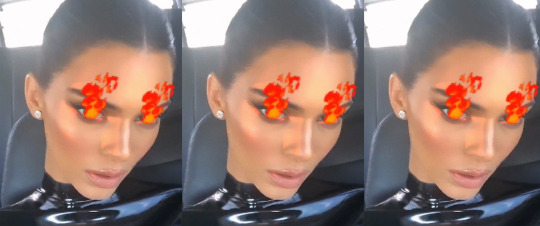

What is Face Filtering?
AR “face filters” — a mask-like augmented reality that adds virtual objects to an individual's face—have become wildly popular on Instagram, Snapchat, and even video calling on FaceTime. ... Often seen as play, AR face filters can provide an engaging and personal art experience. ("Face Filters for Instagram and Snapchat Are the New Frontier of Surrealist Art", 2019)
How do face filters work?
They detect an image of a face and superimpose virtual elements onto that face via AR. As the subject turns their head or makes different facial expressions, they activate the AR experience.
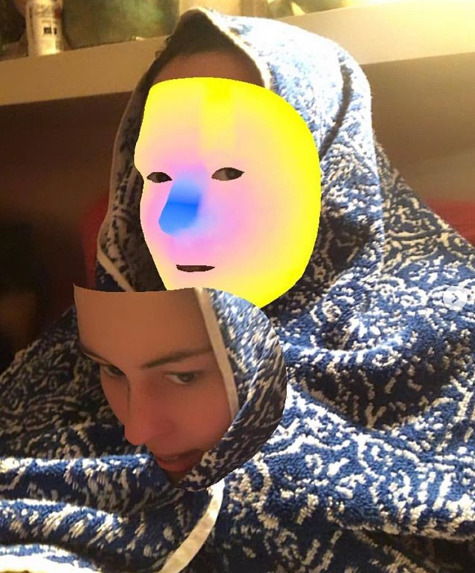
“Mask Off” by Jon Han. The filter pictured removes a user’s face, revealing a new identity underneath
Popular face filtering apps:
1. Facetune
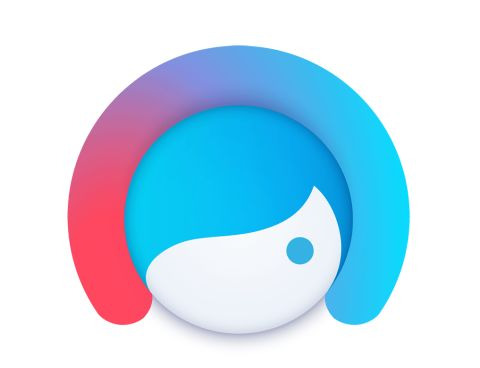

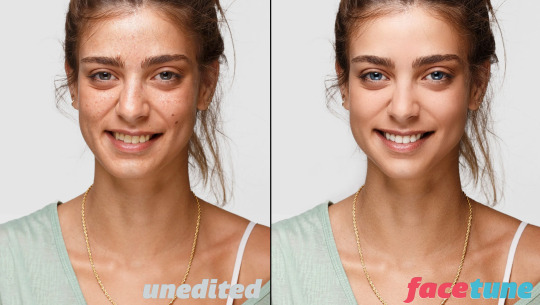
Facetune is a photo editing application used to edit, enhance, and retouch photos on a user’s iOS or Android device created by Lightricks. The app is often used for portrait and selfie editing.
“The massively popular photo-editing app Facetune is driving a generation of young women to extreme and obsessive lengths to look flawless online.” ("Selfies, Surgeries And Self-Loathing: Inside The Facetune Epidemic", 2021)
Before and After example from Facetune:
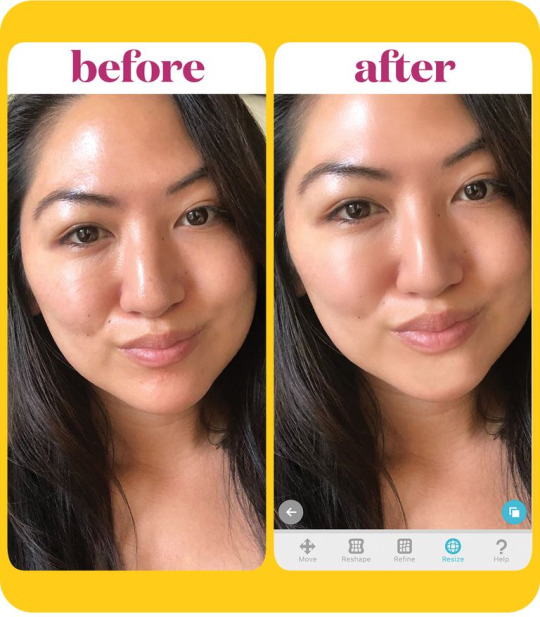
^ As you can see in the above image that on the left is a woman’s face with no filter and no makeup and on the right, her face in FaceTune with bigger lips, a smaller, straighter nose, and zero blemishes in sight.
From using the “Reshape” tool to cinch in your waist and give yourself a breast lift or even make your butt rounder, Facetune has many options to chose from to alter your appearance. It is addicting and can become an obsession for many. Some people even purchase the paid version of the app to have access to “more technical tweaks”, like individually repositioning your eyebrows and narrowing the tip of your nose.
According to Facetune user, Sky Lane, “It can get super obsessive because the second I take a photo I feel like I need to Facetune it,” “Now I’ll be like, ‘Oh my God, I’m chubby, but I can fix that.’” ("Selfies, Surgeries And Self-Loathing: Inside The Facetune Epidemic", 2021). Facetune makes it harder for people to love themselves, but at least they can love their edited photo, right?
Sky Lane’s Facetune image that she uploaded to Instagram:
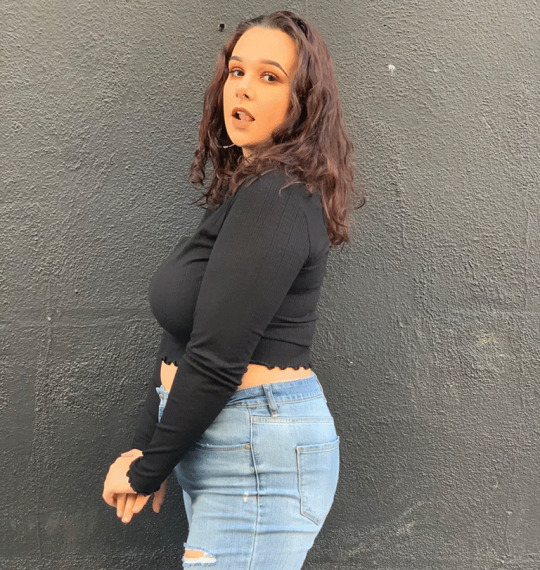
2. Photoshop Fix
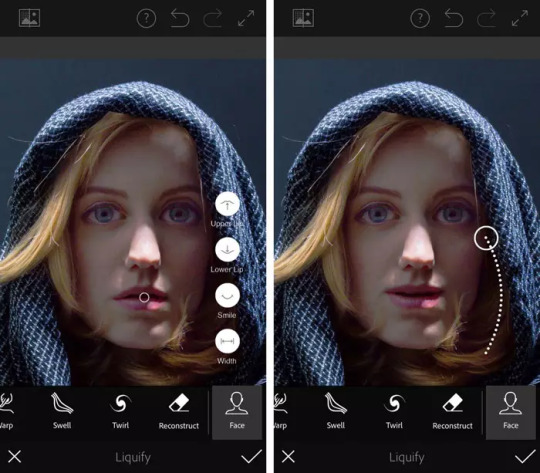
Photoshop Fix is not as easy to use as some of the other apps but it’s well worth learning. It includes a large range of photo retouching tools. The Lighten tool is great for teeth whitening and you can use the Smooth tool to even out skin. (Hermans, 2021)
The Healing brush will correct spots and blemishes quickly without effort. The standout feature is the Liquify tool, which allows you to make adjustments to facial features. (Hermans, 2021)
Why do people use filters?
Filters could prime us for biometric observation. (Rettberg 2017)
They have the potential to change self-perception on a mass scale.
They also offer us the ability to positively explore identity through digital dis/embodiment.

How Does Social Media Affect Beauty Standards and Mental Health?
Face filtering has been around for decades now, however with spending more time than ever on social media due to the COVID-19 pandemic, the face-tuning epidemic has only accelerated... There are only consequences to using face filters.
The pervasiveness of these filtered and manipulated images can seriously affect a person's self-esteem. Using these beautification filters can have severe consequences; they not only make you feel bad that you are not in the real world, but can also lead to digitised dysmorphia. They affect both self-image and self-esteem.
Believe it or not, the filters that are causing the most harm are those which alter facial features such as having larger eyes, blurred skin or bigger lips. It may not sound extreme, but perversely, it can lead us to believe a false sense of reality.
https://big.assets.huffingtonpost.com/athena/files/2021/05/18/60a40b5ee4b014bd0cb1ddc0.mp4
What is Digitised Dysmorphia?
Digitised Dysmorphia (Coy-Dibley 2016) is theory that helps us understanding the pressure placed on women to alter the digital image.
Digitised Dysmorphia is on a spectrum with BDD, but differs for two reasons:
- It is not a medical condition but a “socially constructed condition that is enabled by digital technology.”
- It is not inherently negative, and there is potential for positive uses of beauty technology.
Face Filtering and their link to Digitised Dysmorphia:
Woefully, for those obsessed and addicted individuals who use face filtering for every one of their images, their digital selves are the only version people see of them. And unfortunately for many, they can’t distinguish between their virtual persona with their reality which is a result of body dysmorphia. Dysmorphia at the extremes defies basic human psychology with an increase in unattainable beauty standards.

From FaceTune to Surgeries:
According to Huffpost, a teenager got her first Botox and lip fillers as a junior in college. That same year, she brought a Facetuned photo of her nose to her surgeon to turn it into a reality.
Facetune isn’t just a planning tool for people who are already considering cosmetic surgery. A study published last year by Dr. Michael Reilly revealed that “using Facetune actually instills and increases people’s desire to go under the knife”. ("Digital Appearance Manipulation Increases Consideration of Cosmetic Surgery: A Prospective Cohort Study", 2021)
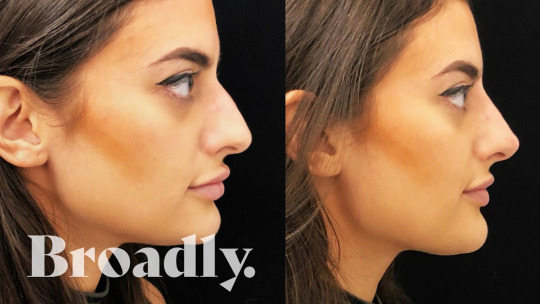
YouTube video link about a teenager girl getting a nose job based on a facetuned photo of her nose: https://www.google.com/url?sa=i&url=https%3A%2F%2Fwww.youtube.com%2Fwatch%3Fv%3D5ZOpLpSNW6c&psig=AOvVaw17OSXBQYTL53-RQMD1BNSR&ust=1621946791186000&source=images&cd=vfe&ved=0CA0QjhxqFwoTCJDl9-ms4vACFQAAAAAdAAAAABAJ
Are there any positives to using Face Filters?
Despite the dangers of face filtering, I personally believe that there are benefits concerning creativity. And I'm not the only one who agrees... According to an article, "Face Filters for Instagram and Snapchat Are the New Frontier of Surrealist Art". Jessica Herrington says, "By making AR filters, artists are creating tools. Instead of creating a singular experience, an individual with access to AR face filters is able to express, collaborate, and share multiple versions of themselves at any time. This way of producing and sharing multiple selves on such a massive scale is completely new in the history of art creation." ("Face Filters for Instagram and Snapchat Are the New Frontier of Surrealist Art", 2021).
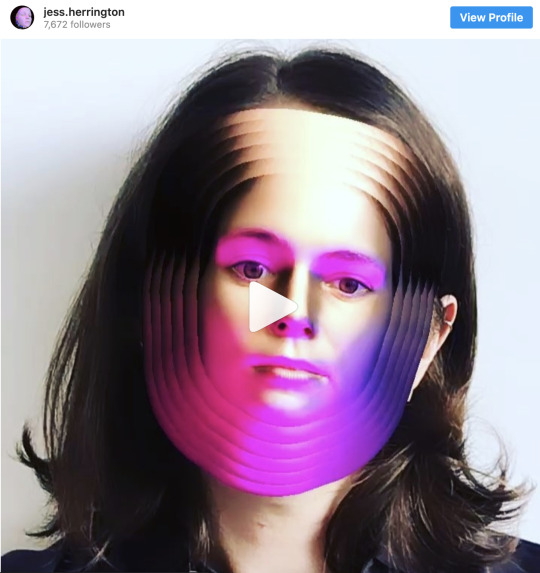
Examples of Face Filtering used as AR Art:
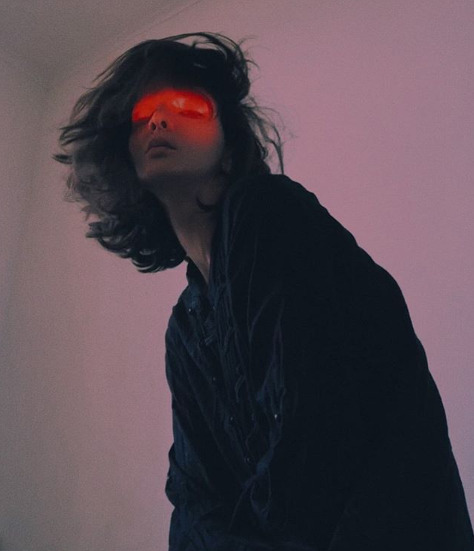
“Badland” by Johanna Jaskowska. The filter places red lighting over the user’s eyes acting as a mask.

“Love Machine” by Marc Wakefield. The user’s face is opened to reveal a robotic skull underneath.
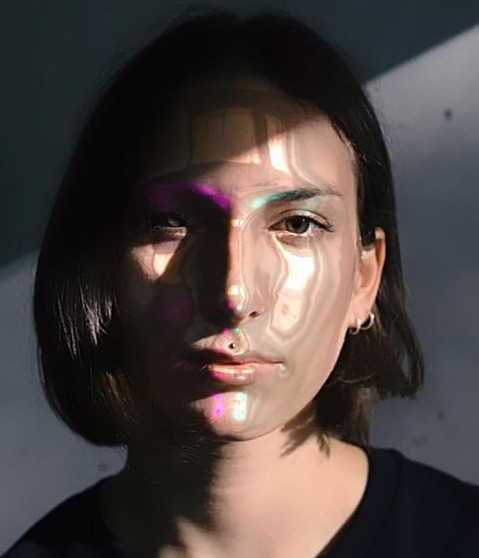
“Beauty 3000” by Johanna Jaskowska. The filter pictured applies a shiny, luminescent skin to a user’s face.
References:
Selfies, Surgeries And Self-Loathing: Inside The Facetune Epidemic. (2021). Retrieved 24 May 2021, from https://www.huffpost.com/entry/facetune-selfies-surgeries-body-dysmorphia_n_60926a11e4b0b9042d989d48
Coy-Dibley, I. 2016 “Digitized Dysmorphia” of the female body: the re/disfigurement of the image, Palgrave Communications, vol. 2, 16040, Retrieved 24 May 2021, <https://doi.org/10.1057/palcomms.2016.40>.
Face Filters for Instagram and Snapchat Are the New Frontier of Surrealist Art. (2019). Retrieved 24 May 2021, from https://onezero.medium.com/the-power-of-face-filters-as-augmented-reality-art-for-the-masses-65a95fb4a577#:~:text=AR%20%E2%80%9Cface%20filters%E2%80%9D%20%E2%80%94%20a,even%20video%20calling%20on%20FaceTime.&text=Often%20seen%20as%20play%2C%20AR,engaging%20and%20personal%20art%20experience.
Hermans, J. (2021). 7 Best Photo Retouching Apps for Smartphone Portraits 2021. Retrieved 24 May 2021, from https://expertphotography.com/photo-retouching-apps/
Digital Appearance Manipulation Increases Consideration of Cosmetic Surgery: A Prospective Cohort Study. (2021). Retrieved 24 May 2021, from https://pubmed.ncbi.nlm.nih.gov/32503384/
(2021). Retrieved 24 May 2021, from https://pubmed.ncbi.nlm.nih.gov/26469879/
#facefilters#filtering#beauty#instagram#socialmedia#dysmorphia#bodydsymorphia#digitiseddysmorphia#plasticsurgery#nosejob
4 notes
·
View notes